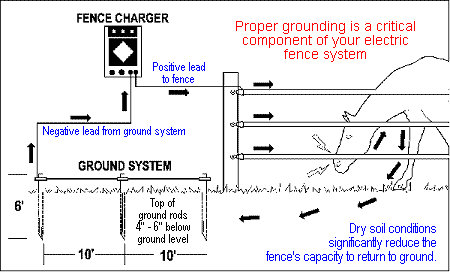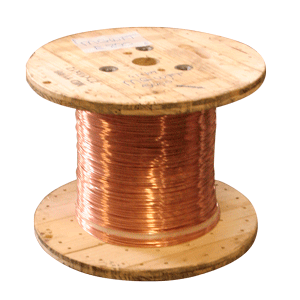Resources
Safe Fence -Install Ground Rods

Installing a minimum of 3 - 6 foot long ground rods, 10 feet apart will insure maximum efficiency in the operation of your electric fence system. Inadequate grounding is the most common failure in electric fence operation. Consider that the grounding system of an electric fence is similar to the antennae on a television set, the larger the antennae, the greater the reception. Ground rods serve to collect the voltage as it passes from the fence, into the animal, through the earth and returns to the fence charger completing the circuit. The animal will only feel the amount of power that returns back to the fence charger, therefore it is critical that the ground field, like the antennae, is large enough to insure the collection of all available power.
Within 20 feet of the location of the fencer dig a 4 to 6 inch deep trench 20 feet long. This should be in an area that is out of the way of animal or vehicle traffic. Drive a ground rod into the ground at each end of the trench and one in the middle. With the brass acorn ground clamps, attach the galvanized wire to the rods laying it in the bottom of the trench.
Attach the end of the wire to the negative or ground post of the fence charger. Attach high voltage shielded wire to the positive post of the fence charger and then to the fence. Do not use unshielded wire to make connections from the fencer positive post to the fence. If there is any danger that horses may walk or run in the area of the ground rods we suggest that a coffee can be buried over the top of the ground rod ends to reduce the possibility of injury. Mark, dig, and set in all of your support posts. These will be used on all gate, ends, corners, changes in elevation (low and high spots), and in spans exceeding 825 ft. to hold tension. We recommend 4"x4" square or 5"+ round or larger pressure treated post. These should be set a minimum of 3 ft. in the ground with concrete.











